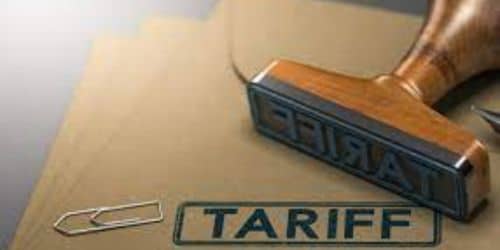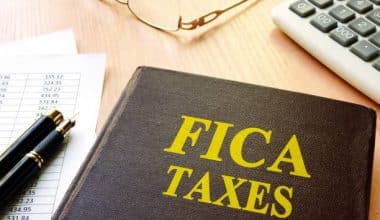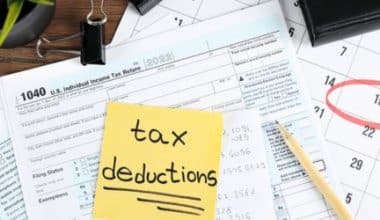Everyone in this part of the world wants more than they have now, whether consciously or unconsciously. People put up a lot of effort to realize their dreams, and after achieving the earlier ones, they go on to create new ones. However, everything has a cost. It’s not always simple to grow. Due to the presence of branded products in the market, small firms cannot thrive. The tariff is implemented by the government to both protect these individuals and to lessen imports of this nature. In this post, we will be looking into the definition of tariffs and non-tariffs barriers and how they work.
Let’s roll!!!
What Are Tariffs
A tariff is a term used to describe the levy levied by the government on imports from other nations. The primary purpose of tariffs is to safeguard domestic manufacturers, but they are sometimes used by the government to discourage imports from other nations and encourage the use of native goods.
Types of Tariff
Tariffs might be ad valorem or specific. When a tax or tariff on imported goods is unit-based, it is a specific tariff because the government wishes to promote domestic products. On the other hand, an ad valorem tariff is one that is based on a specific proportion of the value of the imported goods.
Effects of the Tariff
There are some negative effects of tariff impositions that need to be taken into account, and they are:
- Reduced innovation: In order to compete with imported goods, domestic industries may stop developing. ultimately hurting consumers because the market will be saturated with comparable goods. There will eventually be fierce price competition when all goods are priced the same.
- Trade rivalry: When governments impose taxes on one other’s products, trade rivalry can arise, heightening international tensions.
- Use of dominating position- By placing high tariffs on exports and restricting international trade, industrialized countries may take advantage of developing or underdeveloped countries. A trade war could arise from this, and such circumstances have an impact on the entire world.
- Inflation: Because imported goods enhance many people’s standards of life, they may ultimately lead to inflation. People frequently spend more than they can afford, which raises demand, drives up prices, and contributes to total inflation.
When Should the Government Impose Tariffs?
When there is a possible threat to or injury to domestic manufacturers, or in response to demands, the government should impose tariffs.
Can Tariffs Only be Applied During Importation?
At the moment of import, a tariff may be placed. However, depending on the nature of the damage, the government may levy tariffs in the form of various levies prior to, during, or after the importation of products.
Who Pays The Tariff and to Whom?
The company that imports the items pays tariffs to the government of the nation.
Tariffs Barriers
A tariff is essentially a tax. It is one of several trade policies that a nation can implement, but it raises the price that importers’ customers pay. The customs office of the nation imposing the tariff is where tariffs are paid. For instance, Customs and Border Protection, working on behalf of the Commerce Department, collects tariffs on imports into the United States. The money is collected in the UK by HM Revenue & Customs (HMRC).
It is crucial to understand that domestic customers are responsible for paying import taxes rather than the exports of the foreign country. Consumers will still pay more for foreign goods overall, but if businesses use imported materials or other inputs in their manufacturing process, they will also pass the extra cost along to customers.
Why Are Trade Barriers and Tariffs Used?
In addition to being employed by more mature economies with existing industries, tariffs are frequently created to protect nascent sectors and developing economies. Here are the top five justifications for using tariffs:
#1. Keeping Domestic Work Safe
The imposition of tariffs is frequently extremely politicized. Threats to the home industry might come from the potential for increased competition from imported goods. To save costs, these domestic enterprises may fire employees or move production elsewhere, which would result in more unemployment and an unsatisfied electorate.
#2. Safeguarding Consumers
A government may impose a tariff on goods that it considers would endanger its citizens. For instance, if South Korea believes that beef imported from the United States may be contaminated with a disease, it may impose a charge on the product.
#3. Infant Industries
The Import Substitution Industrialization (ISI) approach used by many developing countries can be used to illustrate the usage of tariffs to protect emerging industries. A developing nation’s government will impose taxes on imported goods in sectors where it wishes to promote expansion.
#4. National Security
Developed nations also use barriers to safeguard some businesses that are thought to be strategically significant, such as those that assist national security.
#5. Retaliation
If nations believe a trading partner has not followed the rules, they may impose tariffs as a reprisal.
Non-Tariffs Barriers
A non-tariff barrier is a strategy for limiting trade that uses trade barriers other than tariffs. Quotas, embargoes, penalties, and levies are examples of non-tariffs barriers. Some nations routinely impose nontariff trade barriers to limit the amount of commerce they conduct with other nations as part of their political or economic strategy.
How Non-Tariffs Barriers Work
Non-tariff trade restrictions are frequently used by nations. The political alliances of a nation and the general accessibility of goods and services have an impact on decisions regarding when to establish nontariff barriers. Any international trade restriction, including tariffs and non-tariff barriers, affects the global economy in general because it restricts the functions of the free market. Particularly for proponents of laissez-faire capitalism, the lost revenue that certain businesses may incur as a result of these trade barriers may be regarded as an economic loss. Laissez-faire capitalists hold that governments shouldn’t meddle with the functioning of the free market.
Non-tariffs barriers, which are tariffs that an exporting country pays to an importing country for goods or services, can be used in place of or in addition to traditional tariff obstacles. Tariffs are the most common trade restriction since they raise import prices.
Alternatives to regular tariffs are frequently pursued by nations because they spare them from having to impose an additional charge on imported products. Although they have a different financial impact than ordinary tariffs, alternatives to standard tariffs can nonetheless make a significant difference in the volume of commerce.
Non-Tariffs Barriers: Types
Below is the list of non-tariff barriers types you can choose from:
#1. Licenses
Licenses can be used by nations to restrict the import of commodities to particular companies. If a company is given a trade license, it is allowed to import products that are normally prohibited from being traded in the nation.
#2. Quotas
Countries frequently set quotas for both service and good imports and exports. Countries agree on specific caps for the goods and services that are permitted for importation into a country using quotas. Until a nation meets its quota, which it might set for a specified period of time, there are often no limits on importing these goods and services. Quotas are also frequently employed in contracts for licensing in international trade.
#3. Embargoes
Embargoes are situations in which one or more nations formally prohibit commerce with another nation of certain commodities and services. This action may be taken by governments to further particular political or economic objectives.
#4. Sanctions
Sanctions are applied by certain nations to others in order to restrict commerce. Increased administrative procedures or additional customs and trade procedures that impede or restrict a country’s capacity to trade are examples of sanctions.
#5. Voluntary Export Restraints
Exporting nations occasionally use voluntary export restrictions. A country’s ability to export a certain amount of goods and services to other nations is restricted by voluntary export restrictions. These limitations are typically determined by accessibility and political ties.
Who Benefits From Tariffs?
Tariffs benefit importing nations since they set policies and receive support.
What Was the Purpose of Tariffs?
to generate income, safeguard domestic industries, and eliminate trade distortions
Why Did Trump Impose Tariffs?
As part of his “America First” economic strategy to minimize the US trade deficit by switching American trade policy from multilateral free trade agreements to bilateral trade treaties, Donald Trump implemented a number of US tariffs during his administration.
Are Tariffs Hurting the US Economy?
Raising tariffs, which greatly hurt the American economy, was one of former President Trump’s most notable policy decisions.
Related Posts
- REVENUE BILL: Definition & Best Practices In The US
- How to Endorse a Check for Mobile Deposit in 2023 (Update)
- How to Improve Your Communication Skills Now!!! (Helpful Tips)
- PINK TAX: Price Discrimination Based On Gender
- MONITORING SALES PERFORMANCE: How to track Sales Performace (+Quick Tools)






